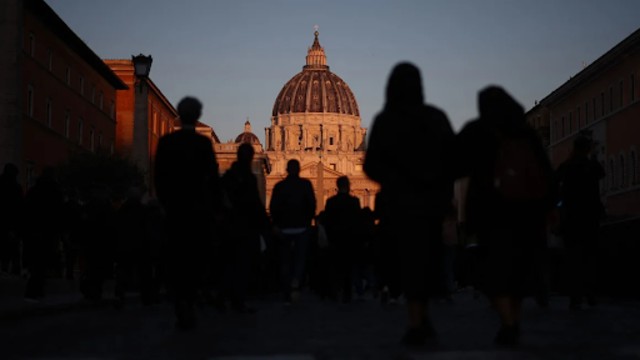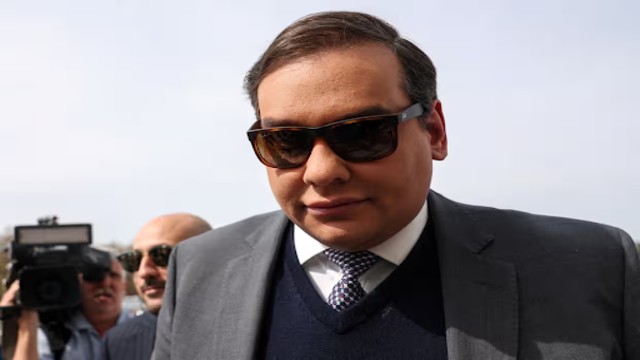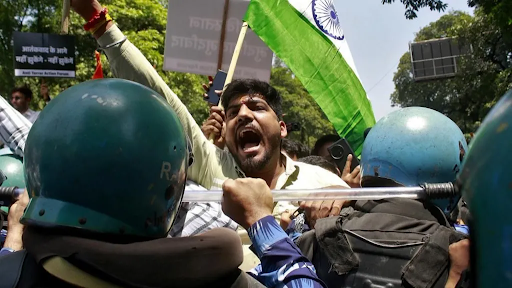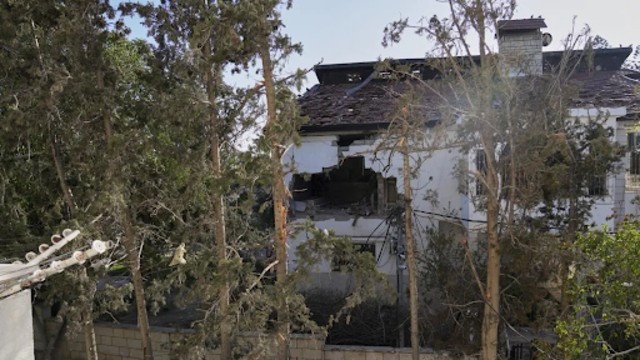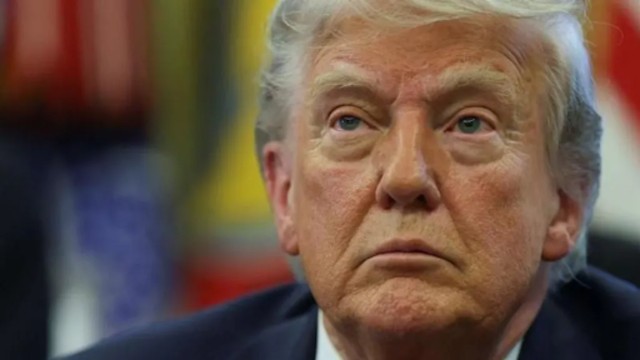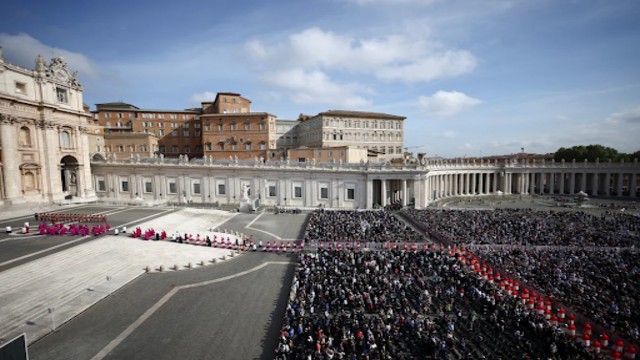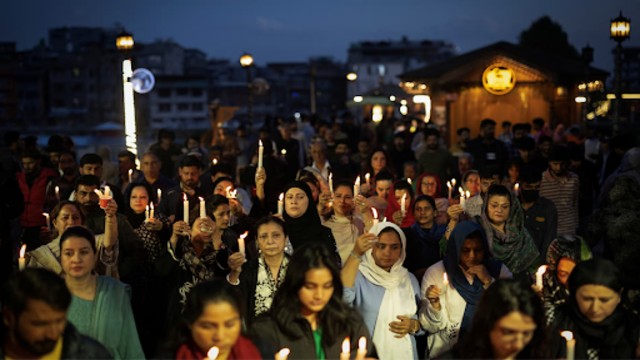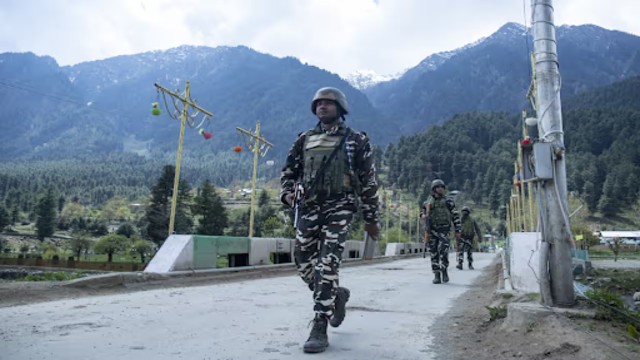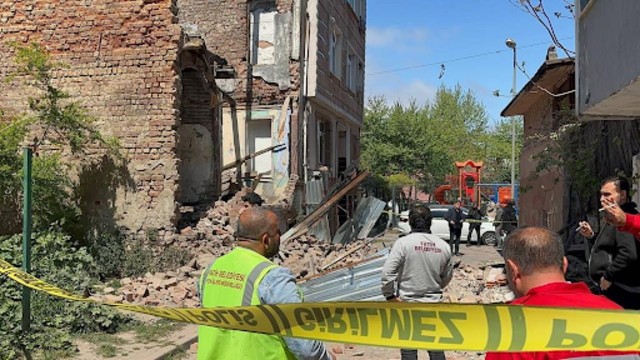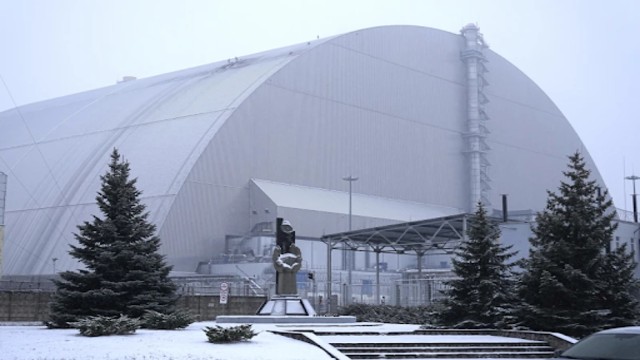
A photo shows the protective structure covering the remains of Reactor 4 at the former Chernobyl nuclear power plant in Ukraine. This containment was built to prevent radiation leaks. The image was taken on Friday, February 14, 2025, after a drone attack damaged the site. (AP Photo)
A drone carrying explosives struck the outer shell of Ukraine’s Chernobyl nuclear plant early Friday, causing a hole in the structure and briefly sparking a fire. Ukrainian officials blamed Russia for the attack, but Moscow denied involvement. The United Nations’ nuclear watchdog confirmed that the strike did not breach the inner protective shell and that radiation levels remain normal.
The attack raised new fears about the safety of nuclear sites during the ongoing war. The Chernobyl plant, which suffered a catastrophic meltdown in 1986, has been inactive for decades. However, any damage to its containment structures could lead to serious consequences.
A photo shows the protective structure covering Reactor 4 at the former Chernobyl nuclear power plant in Ukraine. This barrier was designed to contain radiation. The image was taken on Friday, February 14, 2025, after a drone attack hit the site. (AP Photo)
Ukraine’s President Volodymyr Zelenskyy stated that a Russian drone carrying a high-explosive warhead was responsible for the attack. “A fire broke out but was quickly put out,” he said. Emergency services later released images showing damage to the massive steel-and-concrete structure that covers the plant’s destroyed fourth reactor. The protective shell was built in 2016 to contain radiation and prevent leaks.
The International Atomic Energy Agency (IAEA) did not assign blame but confirmed that its team at the site heard an explosion and was informed about the strike. IAEA chief Rafael Grossi expressed concern, saying the attack highlights ongoing nuclear safety risks.
The incident occurred just two days after former U.S. President Donald Trump announced plans to meet Russian President Vladimir Putin to discuss ending the war. Some Ukrainian officials believe the attack was a signal from Russia to disrupt any potential peace talks.
No Immediate Radiation Risk
Despite the attack, Ukrainian officials assured the public that there is no immediate threat. Oleksandr Kharchenko, an energy expert, said the protective shell remains strong despite the damage. “The structure is reliable, and radiation levels are stable,” he noted.
The fire caused by the explosion also damaged equipment in a maintenance garage. However, Ukraine’s nuclear regulatory body confirmed there was no breach in radiation containment.
Ukrainian authorities display pieces of an explosive device following a drone attack on the former Chernobyl nuclear power plant in Ukraine. The photo was taken on Friday, February 14, 2025. (AP Photo)
Russia has denied any involvement. Kremlin spokesman Dmitry Peskov called the accusation false and suggested Ukraine staged the attack to blame Russia. “Our military does not target nuclear facilities,” he stated.
The situation remains tense, with both sides frequently trading accusations over attacks on sensitive sites. In previous incidents, Ukraine’s Zaporizhzhia nuclear plant, the largest in Europe, has also been hit by drones, raising concerns about nuclear safety.
Ukraine Seeks More Support
As Russian forces continue to push forward on the battlefield, Ukraine is urgently seeking more support from Western allies. Ukrainian officials plan to present evidence of the Chernobyl attack to U.S. officials during the Munich Security Conference.
Zelenskyy sees the attack as a clear message from Putin. He stated that Russia must be held accountable for its actions. “This is a threat to the entire world,” he said.
The IAEA remains on high alert and continues to monitor the situation. Meanwhile, Ukrainian officials warn that attacks on nuclear sites could have devastating global consequences if not stopped.


